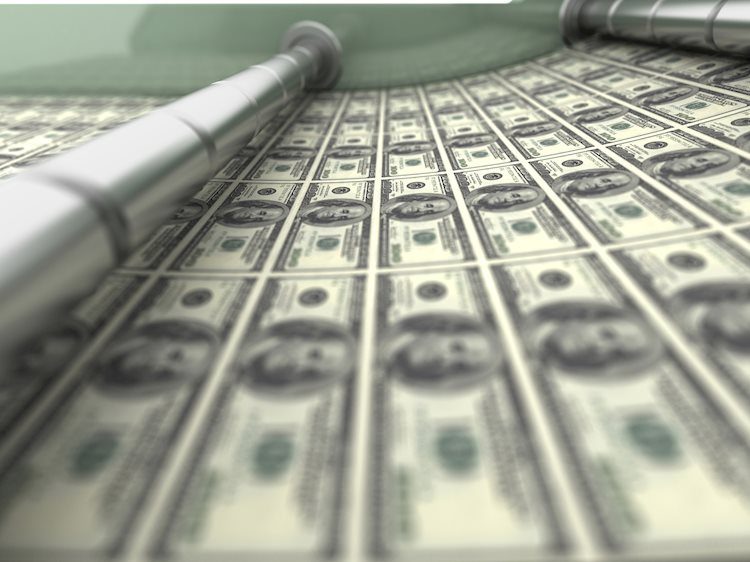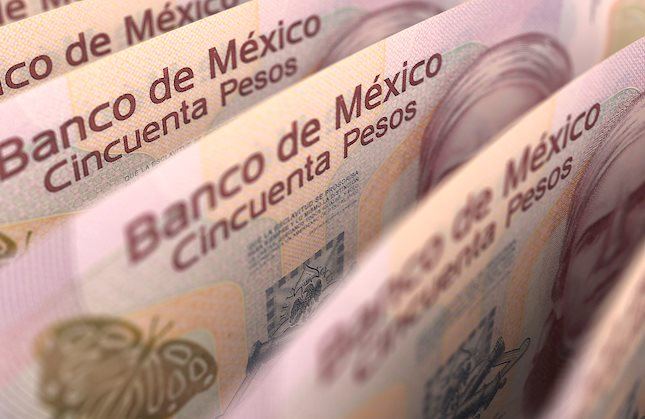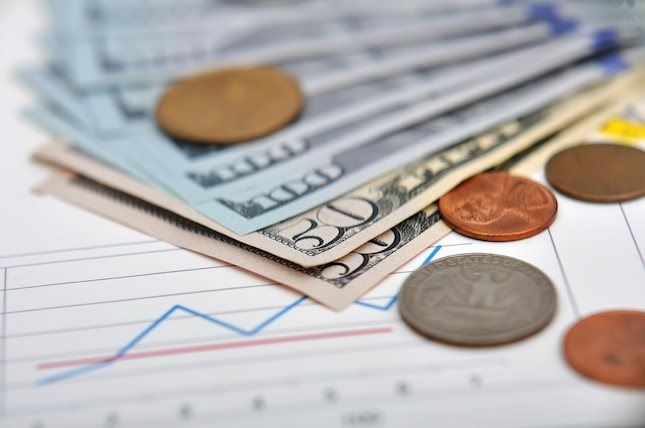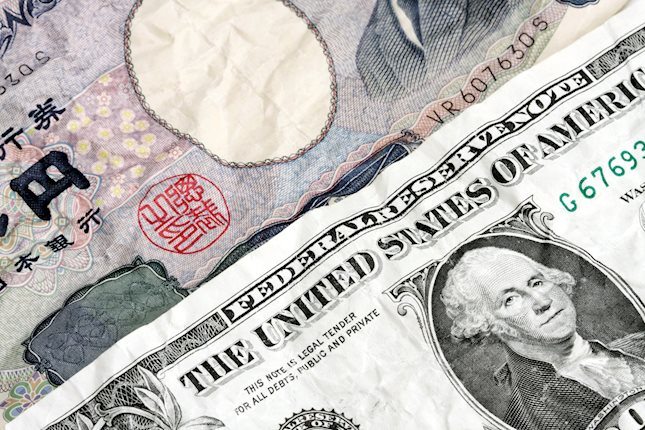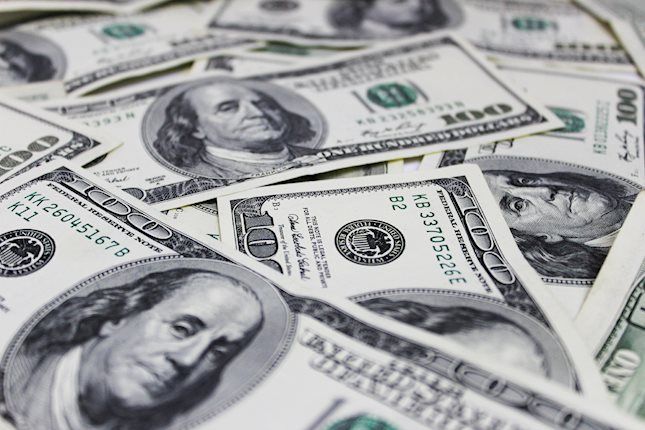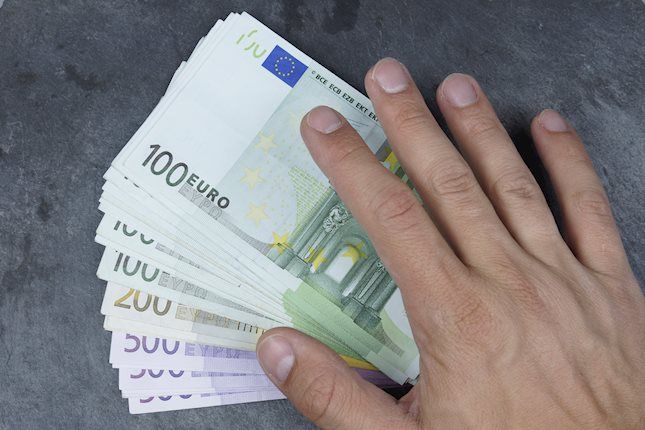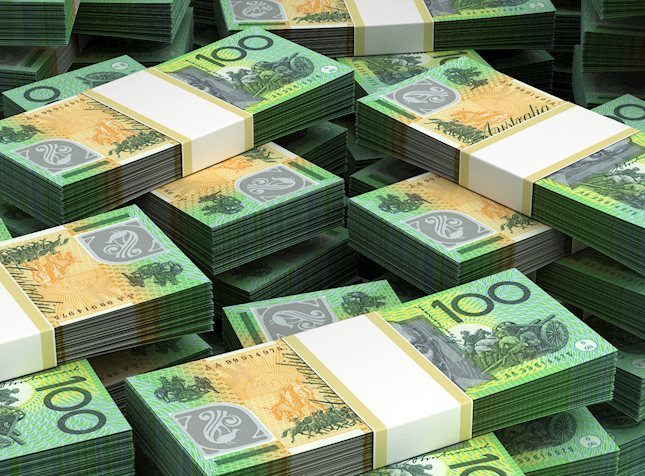US Dollar locks in weekly gains ahead of Powell closing off this week
- The US Dollar still trades near the fresh high of March.
- Traders are enjoying a bank holiday despite the release of US economic data.
- The US Dollar Index has 105.00 still in reach despite small decline.
The US Dollar (USD) never sleeps and that proverb certainly applies to this Friday. The Greenback holds onto recent gains on Good Friday, a bank holiday during which European and US trading desks will be running at minimum capacity. Fireworks did not took place, with the US Dollar Index (DXY) rather flat.
That pivotal piece of data is the US Federal Reserve’s preferred inflation gauge: The Personal Consumption Expenditure Price Index (PCE). The numbers came in as much as expected withing range, with a small retreat in the monthly headline PCE number by 0.01% under estimate. Although he will not be bringing any Easter eggs, US Fed Chairman Jerome Powell is set to speak later this Friday and he may be bearing a surprise.
Daily digest market movers: Headline risk on Powell
- At 12:30 GMT the main data release to look out for:
- Personal Consumption Expenditures for February:
- Headline monthly PCE headed from 0.4% to 0.3%
- Headline yearly PCE went from 2.4% to 2.5%.
- Core monthly PCE went from 0.5% to 0.3%.
- The core yearly PCE Index ticked down from 2.9% to 2.8%.
- The US Goods trade balance for February came in at -$91.8 billion against -$ 90.5 billion in January.
- Personal Income slowed from 1% to only 0.3%.
- Personal Spending rose from 0.2% to 0.8%.
- Wholesale Inventories data for January inventories fell by 0.3%. and rose in February by 0.5%.
- Personal Consumption Expenditures for February:
- At 15:15 GMT, Federal Reserve Bank of San Francisco President Mary Daly will kick off the Federal Reserve Bank of San Francisco Macroeconomics and Monetary Policy Conference. She will be followed by a statement from Fed Chairman Jerome Powell at around 15:30 GMT.
- Equities will not be moving this Friday with both Europe and US markets closed.
- According to the CME Group’s FedWatch Tool, expectations for the Fed’s May 1 meeting are at 95.8% for keeping the fed funds rate unchanged, while chances of a rate cut are at 4.2%.
- The benchmark 10-year US Treasury Note trades around 4.20%, up from 4.18% earlier this week.
US Dollar Index Technical Analysis: Fed remains focused on June
The US Dollar Index (DXY) is making its way to a possible fresh high for March seeing its current positioning just below it at 104.72. The US Dollar bulls are clearly back in the game with a four-day winning streak for the Greenback. Although expectations around the PCE numbers are already in favor of an uptick, the magnitude of that uptick could fuel a substantial US Dollar rally amid exceptionally thin liquidity in markets.
That first pivotal level for the DXY at 104.60, where last week’s rally peaked, has been broken. Further up, 104.96 remains the level to beat in order to tackle 105.00. Once above there, 105.12 is the last resistance point for now before the Relative Strength Index (RSI) will trade in overbought levels.
Support from the 200-day Simple Moving Average (SMA) at 103.75, the 100-day SMA at 103.48, and the 55-day SMA at 103.72 are unable to show their importance as support because traders didn’t wait for a drop to those levels for a turnaround. The 103.00 big figure looks to remain unchallenged for longer, after the decline in the wake of the Fed meeting last week got turned around way before reaching it.
Fed FAQs
Monetary policy in the US is shaped by the Federal Reserve (Fed). The Fed has two mandates: to achieve price stability and foster full employment. Its primary tool to achieve these goals is by adjusting interest rates. When prices are rising too quickly and inflation is above the Fed’s 2% target, it raises interest rates, increasing borrowing costs throughout the economy. This results in a stronger US Dollar (USD) as it makes the US a more attractive place for international investors to park their money. When inflation falls below 2% or the Unemployment Rate is too high, the Fed may lower interest rates to encourage borrowing, which weighs on the Greenback.
The Federal Reserve (Fed) holds eight policy meetings a year, where the Federal Open Market Committee (FOMC) assesses economic conditions and makes monetary policy decisions. The FOMC is attended by twelve Fed officials – the seven members of the Board of Governors, the president of the Federal Reserve Bank of New York, and four of the remaining eleven regional Reserve Bank presidents, who serve one-year terms on a rotating basis.
In extreme situations, the Federal Reserve may resort to a policy named Quantitative Easing (QE). QE is the process by which the Fed substantially increases the flow of credit in a stuck financial system. It is a non-standard policy measure used during crises or when inflation is extremely low. It was the Fed’s weapon of choice during the Great Financial Crisis in 2008. It involves the Fed printing more Dollars and using them to buy high grade bonds from financial institutions. QE usually weakens the US Dollar.
Quantitative tightening (QT) is the reverse process of QE, whereby the Federal Reserve stops buying bonds from financial institutions and does not reinvest the principal from the bonds it holds maturing, to purchase new bonds. It is usually positive for the value of the US Dollar.
Forex News
Keep up with the financial markets, know what's happening and what is affecting the markets with our latest market updates. Analyze market movers, trends and build your trading strategies accordingly.
